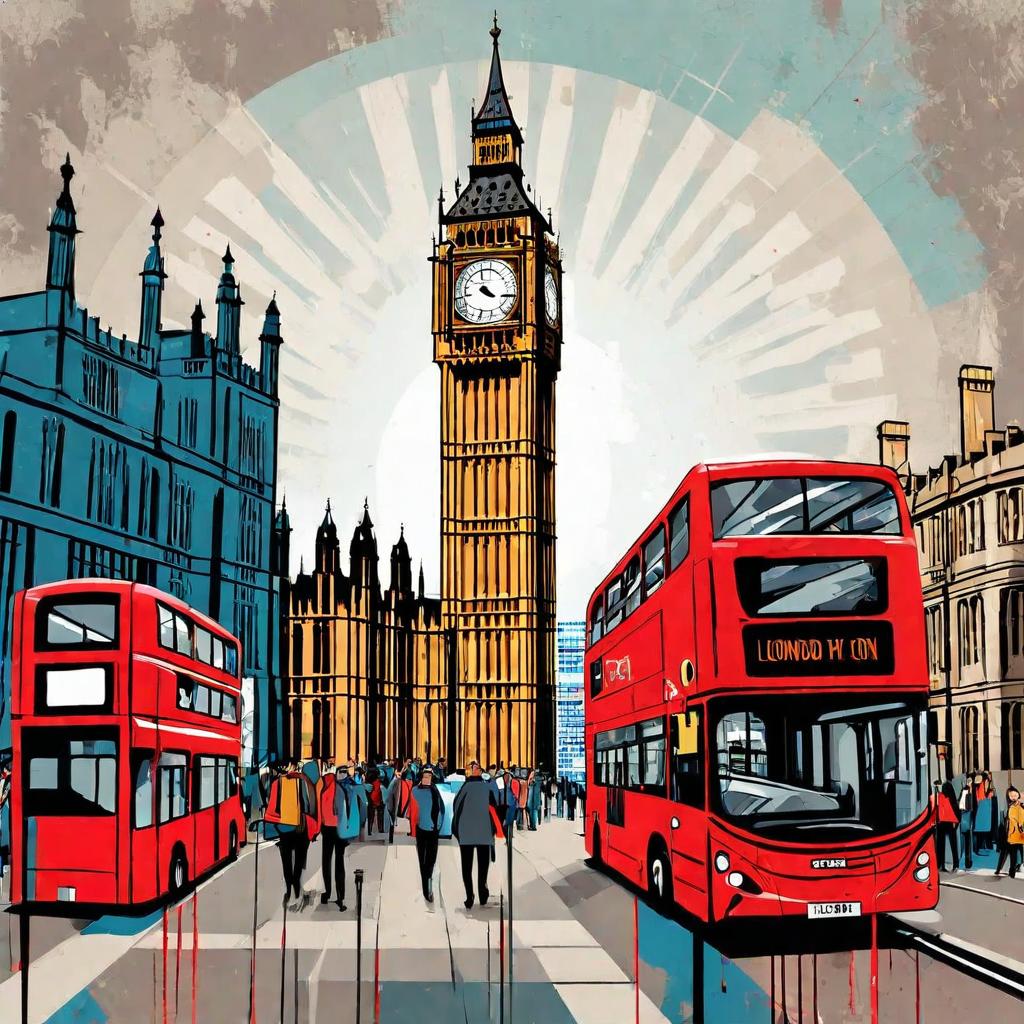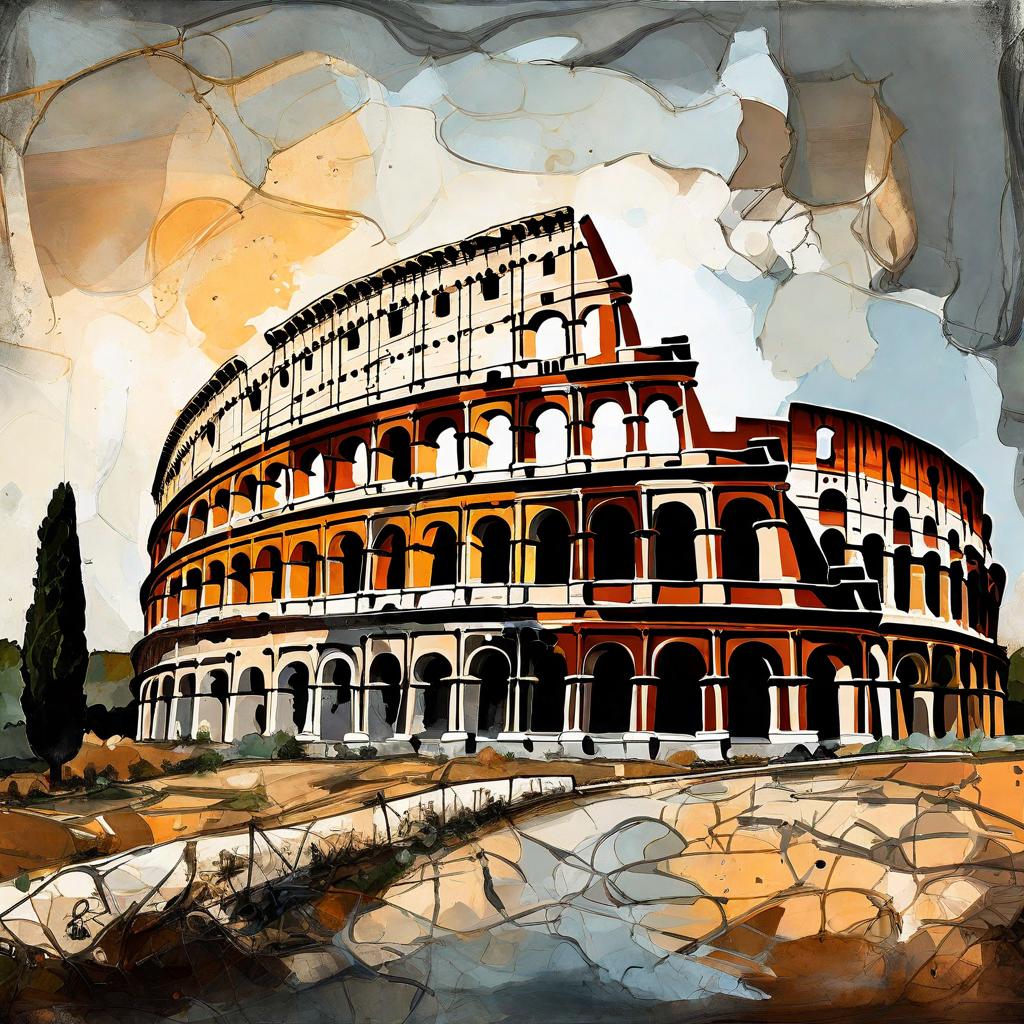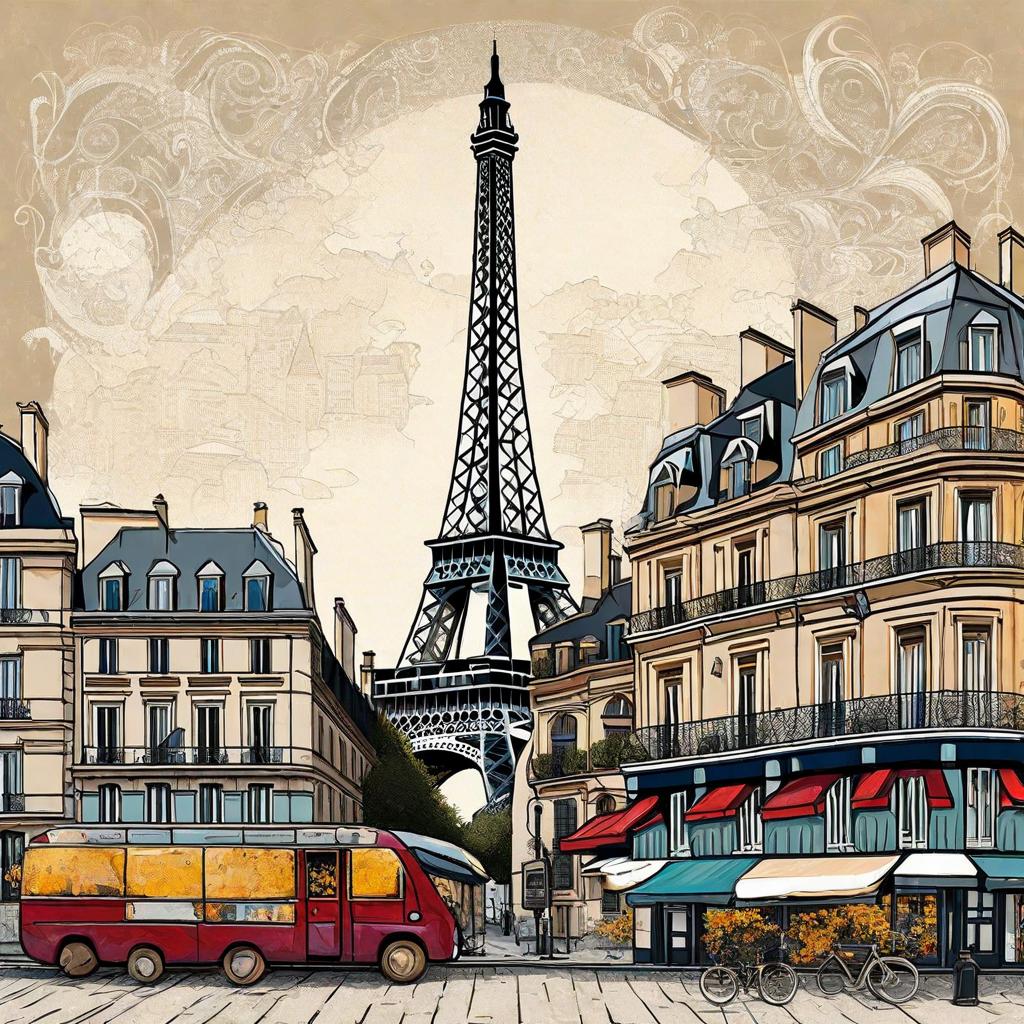London, the British capital, is a magnet for tourists from all over the world. It offers a fascinating mix of historic sites, iconic symbols, a vibrant cultural scene and a lively nightlife. Whether you’re looking to stroll down the famous Oxford Street, tour Buckingham Palace, take a ride on the London Eye with its breathtaking views, or experience the legendary atmosphere of Soho with its bars and clubs, London will make all your wishes come true. This complete guide to London will help you plan an unforgettable trip to the heart of the UK.
Contents
When to visit London
The best time to visit London depends on your preferences and what you expect from your trip:
Spring (March – May):
- The weather is pleasant, with average temperatures between 10 and 17 °C.
- Fewer crowds than in the summer months.
- The ideal season for walking and exploring the parks.
Summer (June – August):
- The longest days with longer opening times for sights and attractions.
- A lively festival atmosphere with many outdoor events.
- The highest prices and the most tourists.
Autumn (September – November):
- The weather is still mild, with average temperatures between 12 and 18 °C.
- Fewer tourists and lower prices.
- Beautiful colours of autumn leaves in parks.
Winter (December – February):
- The coldest period with average temperatures between 3 and 7 °C.
- Magical Christmas atmosphere with markets and decorations.
- Discounts in shops and lower accommodation prices.
A general summary of suggestions for visiting London by time of year.
So if you want pleasant weather and a quieter atmosphere with fewer tourists, choose spring (March – May) or autumn (September – November). If you want longer days, a festival atmosphere and don’t mind the higher prices and crowds, go for summer (June – August). Winter London (December – February) will enchant you with its festive atmosphere, lower prices and fewer tourists.
What transport to choose when travelling to London
By plane:
- The fastest option from many destinations.
- The main airports are Heathrow (LHR), Gatwick (LGW), Stansted (STN), Luton (LTN) and City (LCY).
By train:
- A scenic journey from many parts of the UK and Europe.
- Central Station:St Pancras International (Central London).
By bus:
- The cheapest option from many destinations in Europe.
- Main bus station: Victoria Coach Station (central London).
By car:
- Difficult and stressful option, heavy traffic and expensive parking.
When travelling by car, be sure to find out and ideally arrange parking in advance.
Boats:
- A unique and unusual option from many destinations in Europe.
- Main port: Tilbury Docks (east of central London).
Public transport in London
London has an extensive and sophisticated local public transport network, which includes a variety of modes of transport:
Metro (Underground):
- The most famous and fastest way to get around London.
- 11 lines with 270 stations covering the whole city.
- It operates from 5:00 am to midnight (some lines run longer on weekends and holidays).
- Tickets are bought at stations from vending machines or at ticket counters.
- https://tfl.gov.uk/maps/track/tube
Buses:
- An extensive network of buses throughout London.
- Double-decker buses are a typical symbol of London.
- Tickets are purchased from the driver (in cash) or with an Oyster/Contactless card.
- Night buses (night lines) provide connections at night.
- https://tfl.gov.uk/maps
Trains:
- Two types of trains:
- Overground: overground network with 11 lines connecting central London with the suburbs.
- National Rail: Trains connecting London with other cities in England.
- Tickets are bought at stations from vending machines or at ticket counters.
- https://content.tfl.gov.uk/london-overground-network-map.pdf
- https://www.nationalrail.co.uk/
Trams:
- A small tram network in south-east London.
- Tickets are purchased from the driver (in cash) or with an Oyster/Contactless card.
- https://tfl.gov.uk/maps/track/tram
Ships:
- A nice way to see London from a different perspective.
- Operational routes on the River Thames with stops at the main sights.
- Tickets can be bought at the piers or online.
- https://www.thamesclippers.com/
Other options:
- Taxi: London’s black cabs are iconic, but also quite expensive.
- Cycle paths: London has an extensive network of cycle paths for cycling enthusiasts.
- On foot: walking around central London is a great way to experience the city’s atmosphere.
Carsharing companies:
- There are several car-sharing companies in London, such as Zipcar and Car2Go. These services allow you to rent a car for a short period of time and park it anywhere within the company’s designated zone.
Recommendation:
- For shorter journeys in central London, the Tube is ideal.
- For longer journeys or trips around London, use the trains.
- Buses are flexible and relatively cheap, but can be slower than the metro.
- If you have an Oyster card or contactless payment card, you can use it on all modes of transport except taxis.
- Don’t forget to download a mapping app (e.g. Citymapper) on your phone before your trip to help you navigate the city.
The most attractive sights in London
- Buckingham Palace: The official residence of the British Queen. You can see the State Rooms (in the summer months) or watch the changing of the guard. https://www.rct.uk/visit/buckingham-palace
- Big Ben and the Houses of Parliament. You can see the Houses of Parliament and take part in a debate in the House of Commons. https://www.parliament.uk/
- Westminster Abbey: a Gothic church where coronations and royal weddings take place. You can see the tombs of famous people and the Jewel of Westminster. https://cs.wikipedia.org/wiki/Westminstersk%C3%A9_opatstv%C3%AD
- London Eye: A giant Ferris wheel with breathtaking views of the whole city. https://www.londoneye.com/
- Tower of London: a historic castle that served as a royal residence, treasury, armoury and prison. You can see the Crown Jewels, Tower Bridge and the White Tower. https://www.hrp.org.uk/tower-of-london/
- British Museum: a vast collection of artefacts from around the world, from ancient Egypt to Greece and Rome. Free admission. https://www.britishmuseum.org/
- National Gallery: collection of Western art from the 13th to the 19th century, including works by famous artists such as Van Gogh, Rembrandt and Monet. Free admission. https://www.ngprague.cz/
- Hyde Park: one of central London’s largest parks, ideal for walks, picnics and relaxation. https://www.royalparks.org.uk/visit/parks/hyde-park
- Camden Market: A market with clothes, souvenirs, food and music. https://www.camdenmarket.com/
- Covent Garden: a historic area with shops, restaurants and street performers. https://www.coventgarden.london/visit/
Tip: If you have limited time, purchase a London Pass, which gives you access to many sights and attractions at a discounted price. https://londonpass.com/en
Affordable and quality restaurants in London
- Dishoom: An Indian restaurant with branches across London offering delicious and affordable street food inspired by Mumbai. It also offers an extensive cocktail menu. https://www.dishoom.com/
- Padella: Italian restaurant with a casual atmosphere and great value for money. It offers fresh handmade pasta and simple but tasty Italian dishes. https://padella.co/
- Bao: Hong Kong restaurant with a modern take on traditional bao bun. It offers various types of stuffed bao bun, dim sum and other tasty Asian specialties. [invalid URL removed]
- Kricket: Indian restaurant with a modern concept, offering innovative and tasty Indian dishes. It also offers vegetarian and vegan options. https://kricket.co.uk/
Tip: If you’re looking for more affordable restaurants in London, I recommend checking out websites like Time Out (https://www.timeout.com/london) or The Guardian (https://www.theguardian.com/uk) for restaurant reviews and tips.
What to do in and around London?
The most common tourist activities in and around London include:
- For a visit to famous sights such as Buckingham Palace, Big Ben and Westminster Abbey, see the list of sights above.
- Exploring world-class museums and galleries such as the British Museum and National Gallery etc.
- Walk or cycle in beautiful parks such as Hyde Park and Regent’s Park.
- Shopping on world-famous streets such as Oxford Street and Regent Street.
- Watching a show in the West End or at a concert.
- Trips to historic towns and villages around London, such as Windsor and Oxford.
- Boat trip on the River Thames.
- Taste British cuisine in a traditional pub or restaurant.
London’s nightlife is vibrant and diverse, with something for everyone. The city has a wide range of bars, clubs, pubs and music venues. You will also find many theatres, cinemas and comedy clubs. Popular nightlife areas include Soho, Shoreditch and Camden.
Here are some specific ideas for nightlife activities in London:
- Visit the rooftop bar and enjoy the views of the city.
- Dance the night away at the club.
- Watch the West End performance.
- Go to the concert.
- Visit the comedy club.
- Go to the bar and chat with your friends.
- Visit the pub and enjoy the traditional British atmosphere.
Whatever your interests, you’re sure to find something fun to do in London at night.
Note: These are just a few ideas for things to do in and around London. With so many options, you’re sure to find something you enjoy.
Key points for choosing accommodation in London
Start with your choice of location: Soho and Covent Garden will captivate you with their lively atmosphere and many attractions, while Hammersmith and Kensington will offer a quieter pace and picturesque streets.
Set a budget: from cosy hostels for the adventurous to luxury hotels for those looking to indulge, London offers accommodation for all budgets.
Choose your type of accommodation: hotels for comfort, hostels for sharing experiences, apartments for a sense of home, or Airbnb for an authentic experience – London has something for everyone.
Make travel easy: Consider the proximity of a metro station or bus stop to get around the city comfortably.
Choose according to priorities: wifi, breakfast included, parking? Determine what’s important to you and choose accommodation that meets it.
Read the reviews: before booking, check the experiences of other guests to make sure you like the accommodation.
Don’t forget:
- Book your accommodation early, especially in busy seasons.
- Take transport costs into account and look for accommodation near bus stops.
- Check the reputation of the accommodation provider and avoid scams.
- Consider alternative options such as hostels, Airbnb or apartments.
Remember:
- Rooms in central London tend to be smaller.
- Noise is common in a busy city.
- Sockets in the UK vary, have an adaptor ready.
Contacts for emergency services and police in London
Emergency calls:
- Police: 999
- Ambulance: 999
- Firefighters: 999
Other contacts:
- London Police: https://www.met.police.uk/
- London Ambulance Service: https://www.londonambulance.nhs.uk/
- London Fire Brigade: https://www.london-fire.gov.uk/
- National emergency line: 0800 800 500 (for non-crisis situations)
Important information:
- If you call the emergency services, be prepared to give your address and what happened.
- In the event of a fire, evacuate the building and call the fire department.
- In the event of a medical emergency, stay with the injured person and call an ambulance.
- If you witness a crime, report it to the police.
Tourist Information Centre
There are several tourist information centres in London where you can pick up free maps and guides. You’ll find them at major tourist spots such as Trafalgar Square, Piccadilly Circus and Victoria Station.
- London official website: https://www.visitlondon.com/
A valuable opportunity
How and where to find a job in London
There are many portals where you can find job ads for jobs in London. Among the most popular are:
- Indeed: https://www.indeed.jobs/
- Reed: https://www.reed.co.uk/
- Totaljobs: https://www.totaljobs.com/
- CV-Library: https://www.cv-library.co.uk/
- Monster: https://www.monster.co.uk/jobs/
- LinkedIn: https://www.linkedin.com/
- uk: https://www.gov.uk/find-a-job
In addition to these portals, you can also check the websites of specific companies you are interested in to see if they have vacancies.
Requirements for temporary work in London:
For a part-time job in London you will usually need:
- Valid passport.
- Visa: If you are not an EU citizen, you will need a work visa. The type of visa you will need depends on your country of origin and the type of work you want to do. For more information about working visas to the UK, visit the UK Government website: https://www.gov.uk/browse/visas-immigration
- National Insurance Number (NIN): you will need a NIN to work and pay tax in London. You can apply for one online at the UK government website: https://www.gov.uk/apply-national-insurance-number
- Bank account in London: You’ll need a bank account so your employer can pay your wages.
Requirements for permanent employment in London:
For permanent employment in London, you will usually need:
- Valid passport.
- Visa: If you are not an EU citizen, you will need a work visa. The type of visa you will need depends on your country of origin and the type of work you want to do. For more information about working visas to the UK, visit the UK Government website: https://www.gov.uk/browse/visas-immigration
- National Insurance Number (NIN): you will need a NIN to work and pay tax in London. You can apply for one online at the UK government website: https://www.gov.uk/apply-national-insurance-number
- Qualifications and experience relevant to the position.
- Work permit: if you are not an EU national, you will need a work permit. The type of permit you will need depends on your country of origin and the type of work you want to do. For more information about work permits for the UK, visit the UK Government website: https://www.gov.uk/browse/visas-immigration
Important: Before travelling to London, make sure you thoroughly research the UK’s immigration and visa requirements. Information can be found on the UK government website: https://www.gov.uk/browse/visas-immigration



